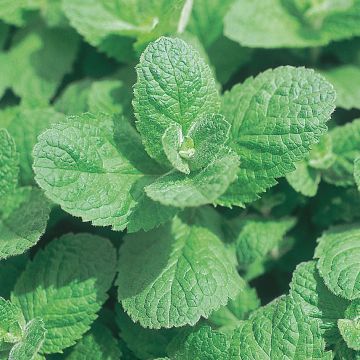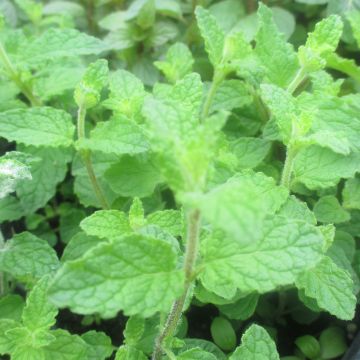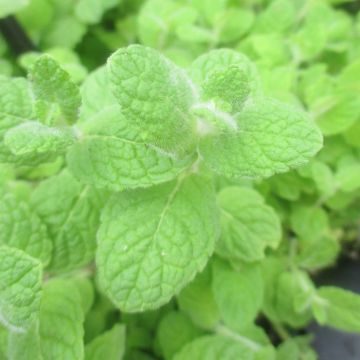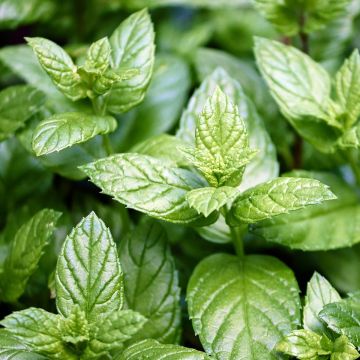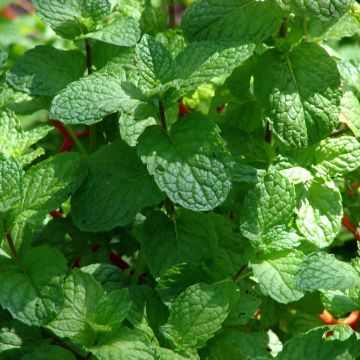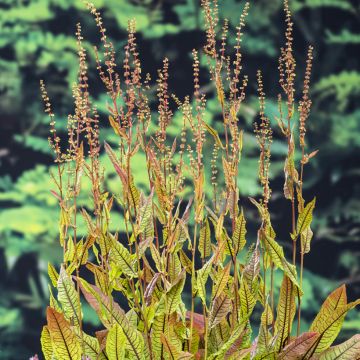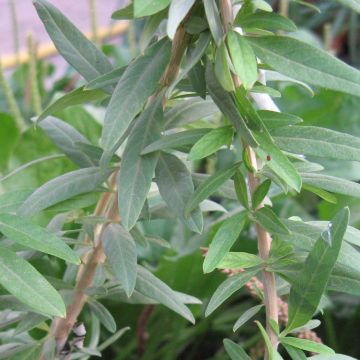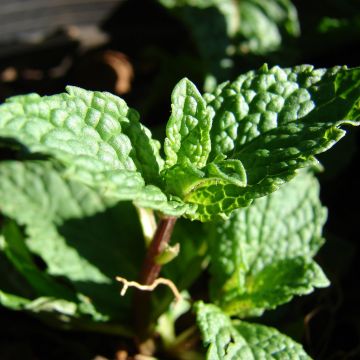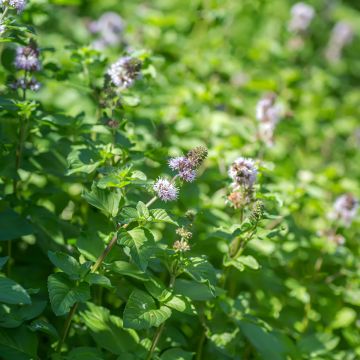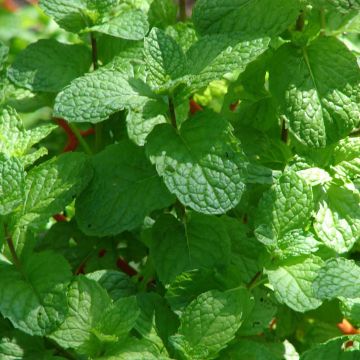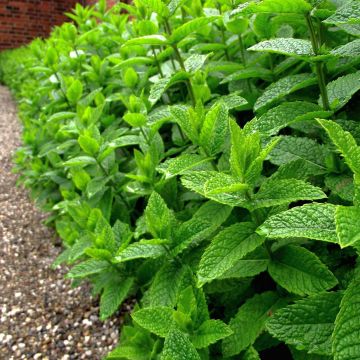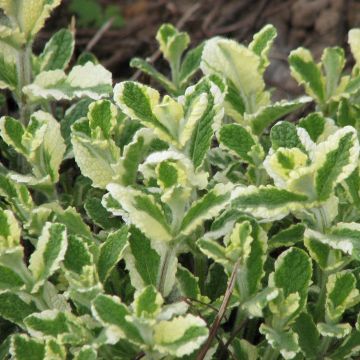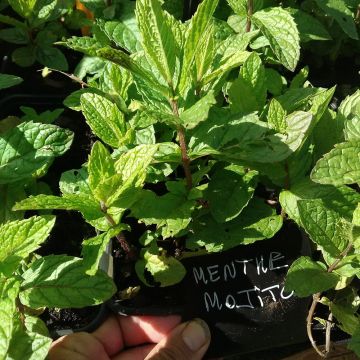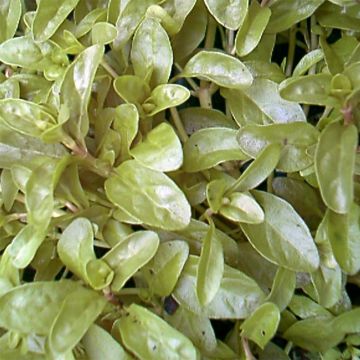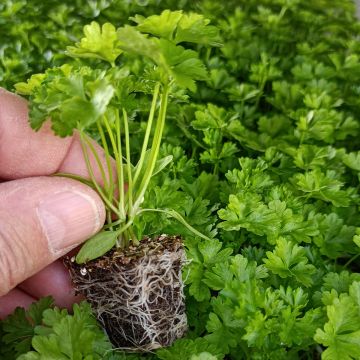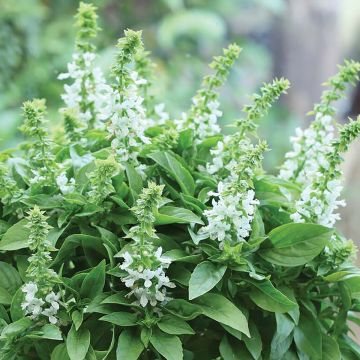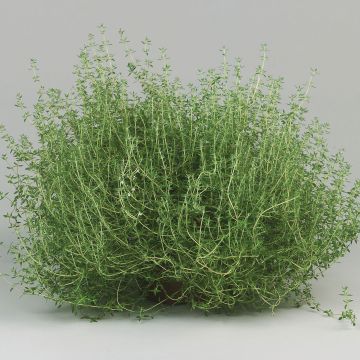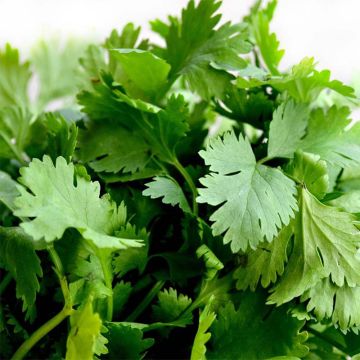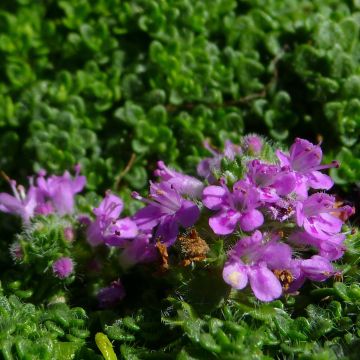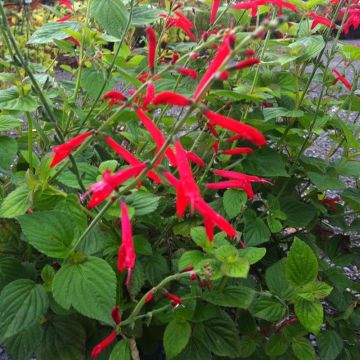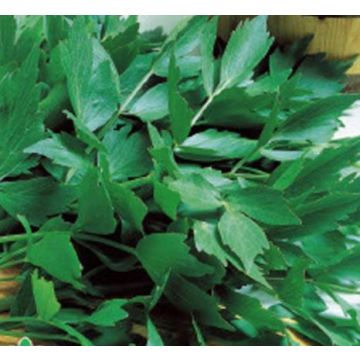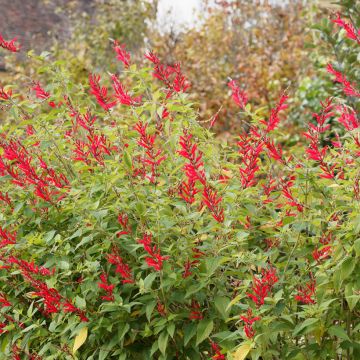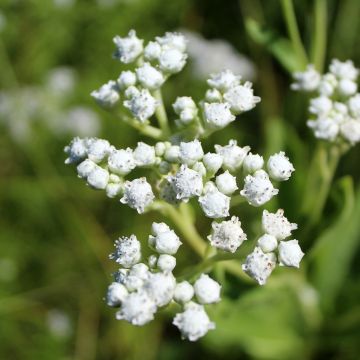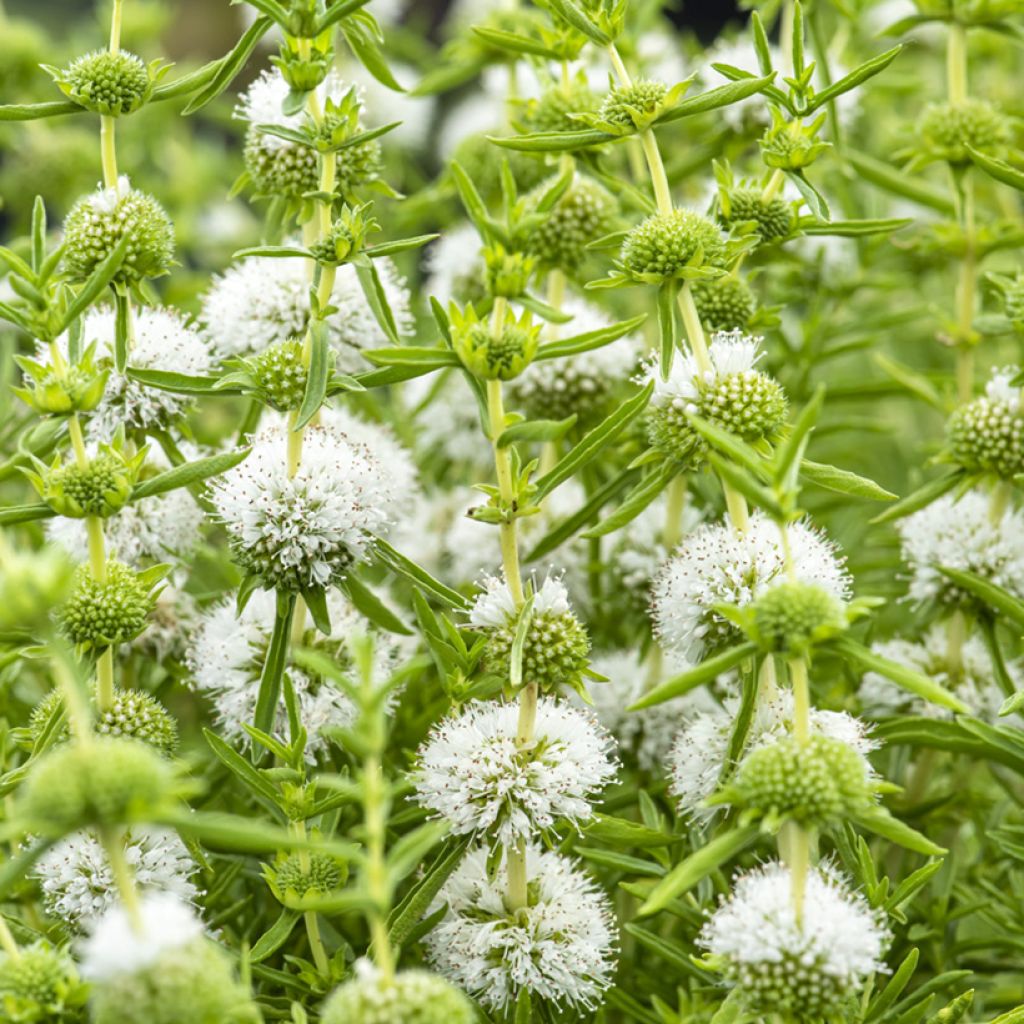

Mentha cervina Alba
Mentha cervina Alba
Mentha cervina Alba
Hart's Pennyroyal, Deer Mint
Why not try an alternative variety in stock?
View all →This plant carries a 12 months recovery warranty
More information
We guarantee the quality of our plants for a full growing cycle, and will replace at our expense any plant that fails to recover under normal climatic and planting conditions.
From €5.90 for pickup delivery and €6.90 for home delivery
Express home delivery from €8.90.
Does this plant fit my garden?
Set up your Plantfit profile →
Description
The Mentha or Preslia cervina 'Alba', commonly known as Deer Mint, is a perennial plant with delicate leaves and a remarkably fresh fragrance. It thrives in any moist location while being less invasive than some other varieties of mint. This species also offers a long, honey-scented summer flowering period in pure white. Resistant and vigorous, it adds a touch of simplicity to water features. Growing deer mint in a pot on a balcony or terrace is possible if constant moisture is maintained. Its young, tender foliage is perfect for preparing refreshing drinks.
The Mentha cervina or Preslia cervina is known as Deer Mint. It belongs to the Lamiaceae family, which includes many aromatic plants such as mint, thyme, lavender, basil, savory, and many others. It is a botanical species native to the western Mediterranean region. It is present in southwestern France to the Iberian Peninsula, extending south to the Azores, Morocco, and Algeria, where it colonises various types of wet soils and survives winter by remaining submerged. In Portugal, this plant is used fresh or dried in the preparation of stews, salads, soups, cheeses, and sauces, and it is also used to create various liqueur infusions. Paired with Mentha pulegium (Pennyroyal), it has traditionally been a repellent against pests.
The 'Alba' form only differs in its white flowering. It is a perennial with running rhizomes, and its vegetation forms a bushy and spreading clump that reaches 0.20 to 0.30 m in height with an approximate spread of 0.40 m. Its erect and hollow stems support the deciduous foliage, which is very dense. The leaves, without petioles, are gathered in small clusters, linear and lanceolate, with marked edges, displaying a colour ranging from medium green to grey-green. They emit a strong menthol scent. From July to September, it produces pure white flowers grouped in pompon-shaped inflorescences located in the axils of the leaves and along the branches. These flowers are attractive to bees and pollinating insects.
Mentha cervina 'Alba' is a robust and frost-tolerant plant suitable for vegetating the edges of ponds or basins and marshy areas. Still, it can also thrive on solid ground if the soil is consistently moist. This mint can tolerate having its feet in water at a depth not exceeding 10 cm. In a garden, it can be planted along the edge of a pond or basin, in the heart of marshy areas, among rocks or stones, in a wet environment, or even in a few centimetres of stagnant water. Due to its non-invasive nature, this mint variety is particularly suitable for small ponds, restricted water bodies, and natural swimming pool designs. To create a balanced ensemble, you can pair it with plants ideal for banks or shallow waters, such as Juncus effusus Spiralis (Corkscrew Rush), Primula florindae (Tibetan Primrose), Pontederia cordata, Acorus calamus, Iris ensata Variegata (Japanese Iris), and wetland grasses like Carex pendula or Eriophorum angustifolium (Common Cottongrass).
Growing Deer Mint in a pot is possible by choosing a container with good water retention and placing the plant preferably in full sun.
Report an error about the product description
Mentha cervina Alba in pictures
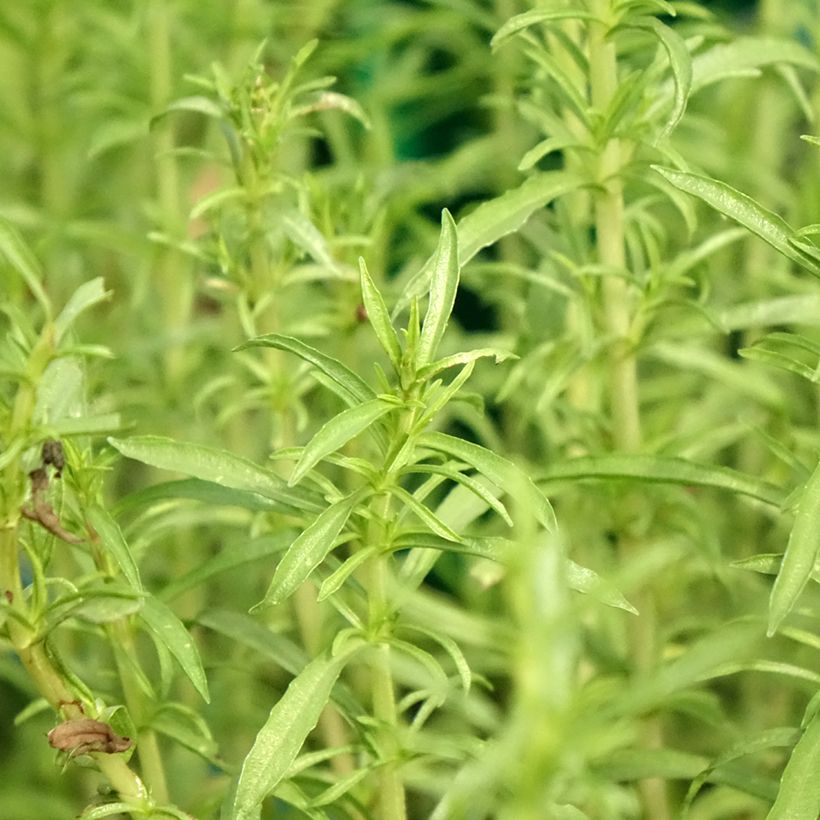

Flowering
Foliage
Plant habit
Botanical data
Mentha
cervina
Alba
Lamiaceae
Hart's Pennyroyal, Deer Mint
Preslia cervina ‘Alba’
Southern Europe
Other Mint
Planting and care
Plant the 'Alba' Water Mint in moist, rich soil, even clay or loamy clay, acidic to neutral, or even slightly alkaline. Planting can be done all year round, except during freezing periods, but it is ideal to plant it from March to May to establish itself before the winter cold. Preferably, place it in a semi-shaded location, although the Mint can practically grow anywhere. It is a plant that thrives in marshy areas and requires constant moisture at the root level, ensuring that it does not exceed a permanent immersion of more than 5 cm of water.
In loosened soil, dig a planting hole with a volume at least three times that of the root ball. Place the plant in the hole, ensuring the top of the root ball is level with the final soil level, then replace the substrate. Water generously. The average planting distance between plants is about 30 centimetres in groups of 3 to 7 specimens for a better effect.
To cultivate Mentha cervina Alba in a pot, it is crucial to regularly check the water level to keep the soil soaked and moist.
Planting period
Intended location
Care
This item has not been reviewed yet - be the first to leave a review about it.
Herbs
Haven't found what you were looking for?
Hardiness is the lowest winter temperature a plant can endure without suffering serious damage or even dying. However, hardiness is affected by location (a sheltered area, such as a patio), protection (winter cover) and soil type (hardiness is improved by well-drained soil).

Photo Sharing Terms & Conditions
In order to encourage gardeners to interact and share their experiences, Promesse de fleurs offers various media enabling content to be uploaded onto its Site - in particular via the ‘Photo sharing’ module.
The User agrees to refrain from:
- Posting any content that is illegal, prejudicial, insulting, racist, inciteful to hatred, revisionist, contrary to public decency, that infringes on privacy or on the privacy rights of third parties, in particular the publicity rights of persons and goods, intellectual property rights, or the right to privacy.
- Submitting content on behalf of a third party;
- Impersonate the identity of a third party and/or publish any personal information about a third party;
In general, the User undertakes to refrain from any unethical behaviour.
All Content (in particular text, comments, files, images, photos, videos, creative works, etc.), which may be subject to property or intellectual property rights, image or other private rights, shall remain the property of the User, subject to the limited rights granted by the terms of the licence granted by Promesse de fleurs as stated below. Users are at liberty to publish or not to publish such Content on the Site, notably via the ‘Photo Sharing’ facility, and accept that this Content shall be made public and freely accessible, notably on the Internet.
Users further acknowledge, undertake to have ,and guarantee that they hold all necessary rights and permissions to publish such material on the Site, in particular with regard to the legislation in force pertaining to any privacy, property, intellectual property, image, or contractual rights, or rights of any other nature. By publishing such Content on the Site, Users acknowledge accepting full liability as publishers of the Content within the meaning of the law, and grant Promesse de fleurs, free of charge, an inclusive, worldwide licence for the said Content for the entire duration of its publication, including all reproduction, representation, up/downloading, displaying, performing, transmission, and storage rights.
Users also grant permission for their name to be linked to the Content and accept that this link may not always be made available.
By engaging in posting material, Users consent to their Content becoming automatically accessible on the Internet, in particular on other sites and/or blogs and/or web pages of the Promesse de fleurs site, including in particular social pages and the Promesse de fleurs catalogue.
Users may secure the removal of entrusted content free of charge by issuing a simple request via our contact form.
The flowering period indicated on our website applies to countries and regions located in USDA zone 8 (France, the United Kingdom, Ireland, the Netherlands, etc.)
It will vary according to where you live:
- In zones 9 to 10 (Italy, Spain, Greece, etc.), flowering will occur about 2 to 4 weeks earlier.
- In zones 6 to 7 (Germany, Poland, Slovenia, and lower mountainous regions), flowering will be delayed by 2 to 3 weeks.
- In zone 5 (Central Europe, Scandinavia), blooming will be delayed by 3 to 5 weeks.
In temperate climates, pruning of spring-flowering shrubs (forsythia, spireas, etc.) should be done just after flowering.
Pruning of summer-flowering shrubs (Indian Lilac, Perovskia, etc.) can be done in winter or spring.
In cold regions as well as with frost-sensitive plants, avoid pruning too early when severe frosts may still occur.
The planting period indicated on our website applies to countries and regions located in USDA zone 8 (France, United Kingdom, Ireland, Netherlands).
It will vary according to where you live:
- In Mediterranean zones (Marseille, Madrid, Milan, etc.), autumn and winter are the best planting periods.
- In continental zones (Strasbourg, Munich, Vienna, etc.), delay planting by 2 to 3 weeks in spring and bring it forward by 2 to 4 weeks in autumn.
- In mountainous regions (the Alps, Pyrenees, Carpathians, etc.), it is best to plant in late spring (May-June) or late summer (August-September).
The harvesting period indicated on our website applies to countries and regions in USDA zone 8 (France, England, Ireland, the Netherlands).
In colder areas (Scandinavia, Poland, Austria...) fruit and vegetable harvests are likely to be delayed by 3-4 weeks.
In warmer areas (Italy, Spain, Greece, etc.), harvesting will probably take place earlier, depending on weather conditions.
The sowing periods indicated on our website apply to countries and regions within USDA Zone 8 (France, UK, Ireland, Netherlands).
In colder areas (Scandinavia, Poland, Austria...), delay any outdoor sowing by 3-4 weeks, or sow under glass.
In warmer climes (Italy, Spain, Greece, etc.), bring outdoor sowing forward by a few weeks.

































